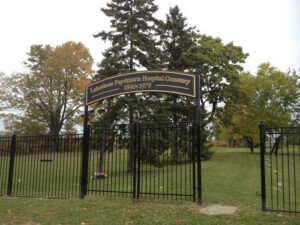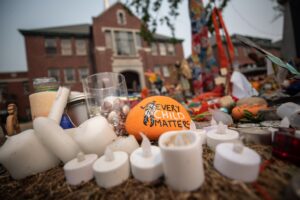Volunteers are working to identify a number of
Indigenous people who were buried in unmarked
graves decades ago at the former Lakeshore
Psychiatric Hospital Cemetery.
Researchers are trying to identify how many rest at
the Horner and Evans Avenues site and the
communities they were taken from.
The cemetery was in operation for 84 years. It opened
in 1890 and was shut by the Ontario government in
1974. Some 1,511 people are buried there. Many of
them died at the Mimico Asylum Lakeshore Psychiatric
Hospital, at Lake Shore Blvd. W., and Kipling Ave.
Most of the burials were unmarked. The
placement of 154 small markers with the
name and year of birth and death of the
deceased only began in 1957.
“It is our sincere wish that these souls will
find peace and tranquility,” said Ed
Janiszewski, who has been working to
identify the graves for years. “The focus
was to give some dignity back to these
people who had been forgotten perhaps. To
have seen this place abandoned like that
was distressing to say the least.” he told
CityNews.
Janiszewski has confirmed about 10 of
those names as belonging to people from
Indigenous communities.
“The hospital back in the 30s and 40s had
been focused on northern Ontario,
servicing that area, before being a more
localized hospital. That gave a good clue
that there would be a lot of Indigenous
people who’d been brought here.”
Back then patients assisted in making coffins and
burying other patients at the asylum cemetery. The
treatment of the patients at the Lakeshore Psychiatric
Hospital was cruel, including forced labour, and violent
restraint methods.
Although Ministers and Priests performed burial
ceremonies for many patients, most of the graves were
left unmarked.
A list of Indigenous people buried at the cemetery,
includes a boy who is only listed as “Indian Boy,”
according to public archive materials.
Further investigation is needed to
determine how many of
the unmarked graves are of Indigenous children and
families and the communities they are from.

